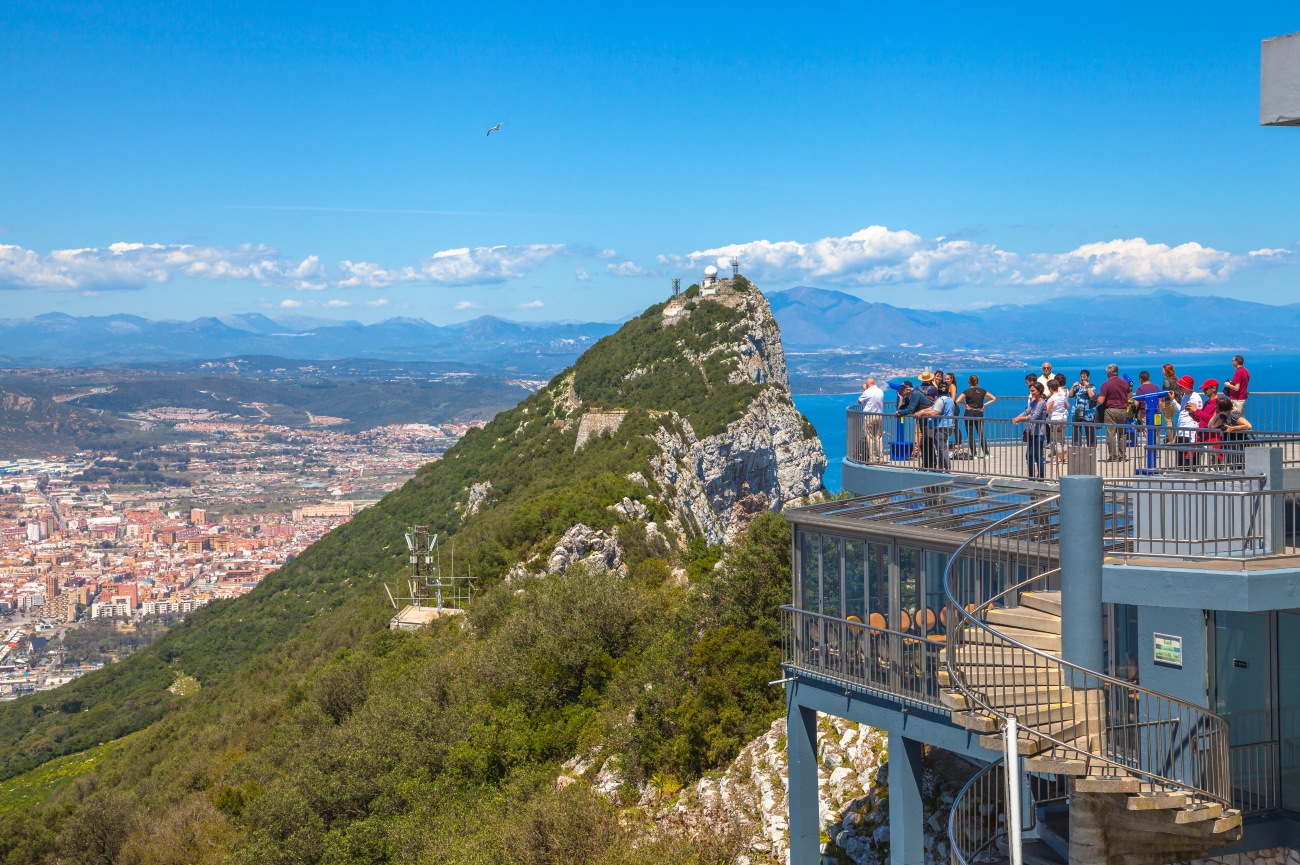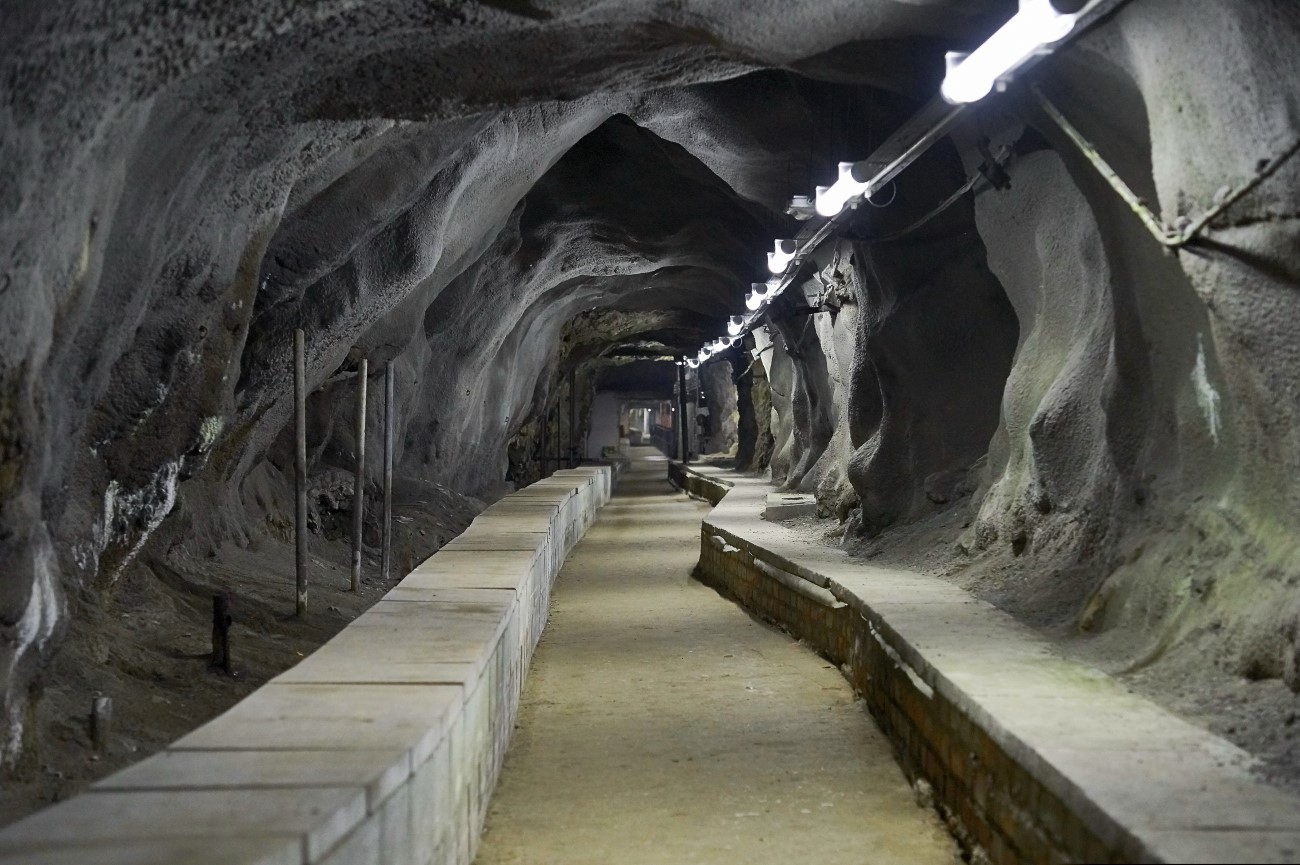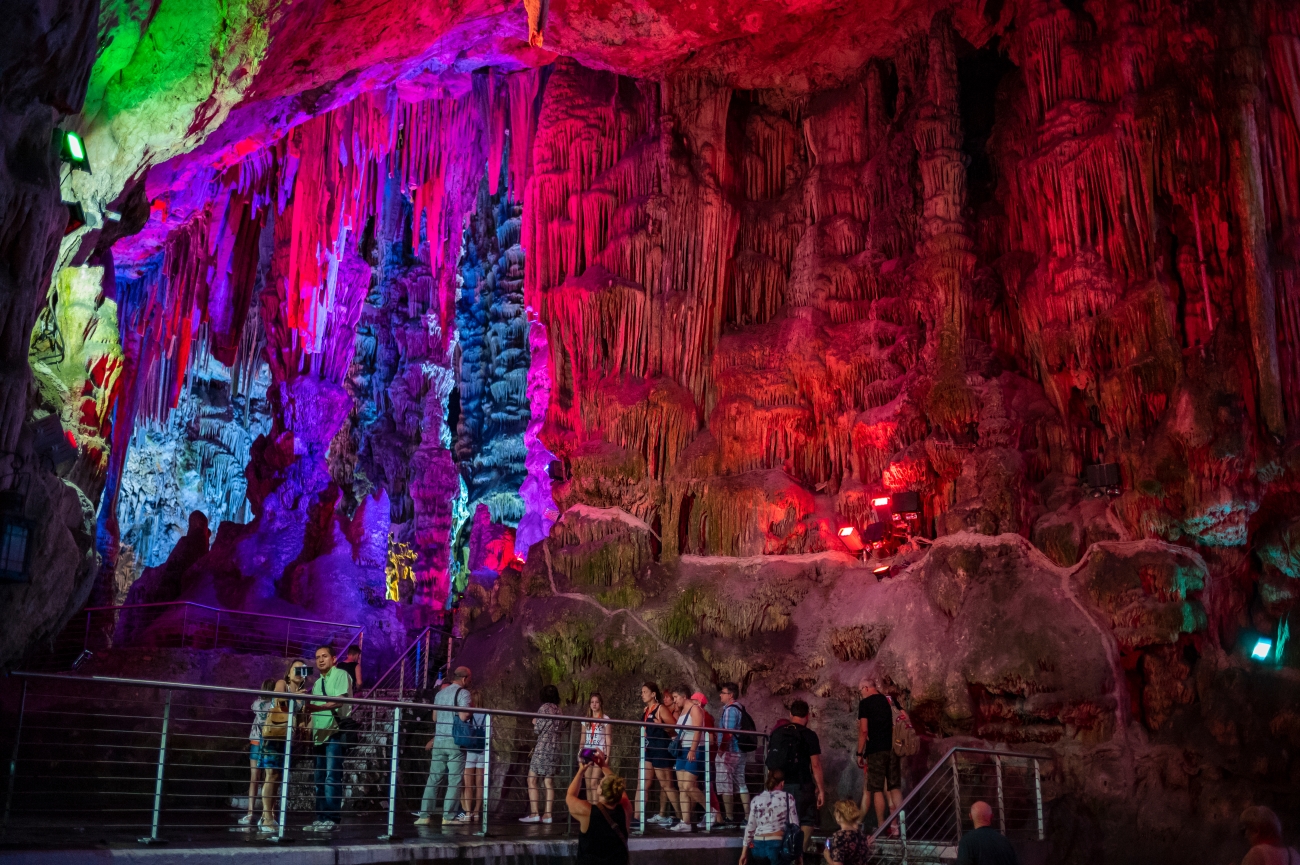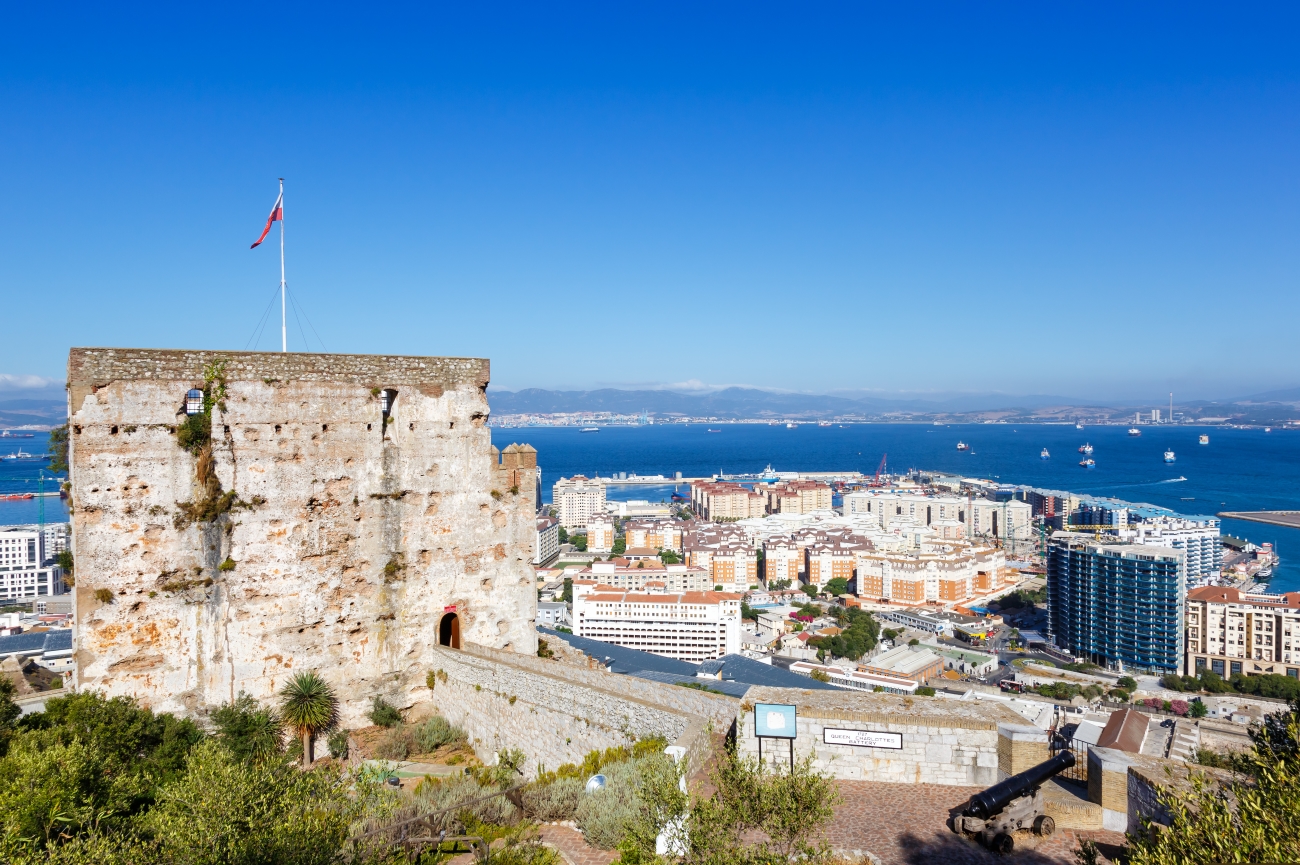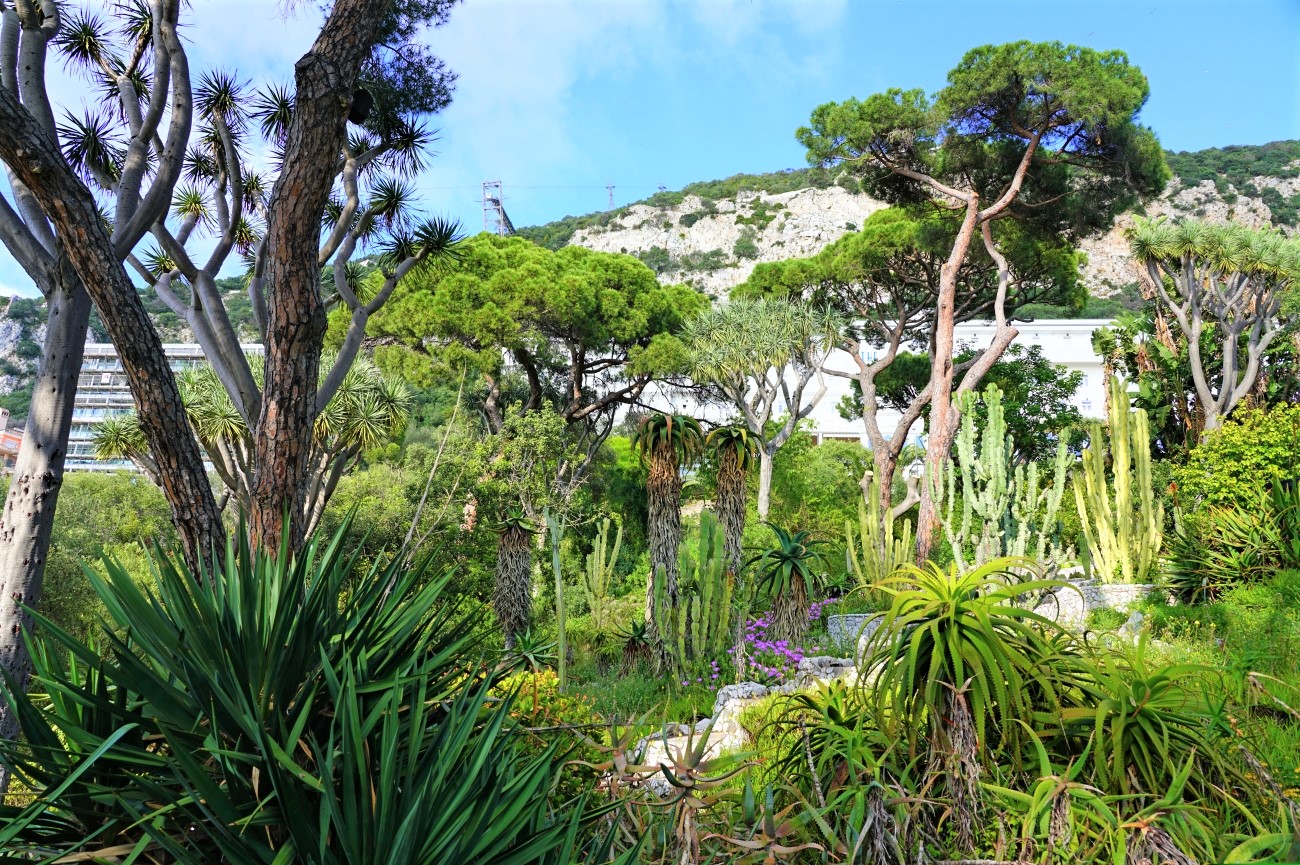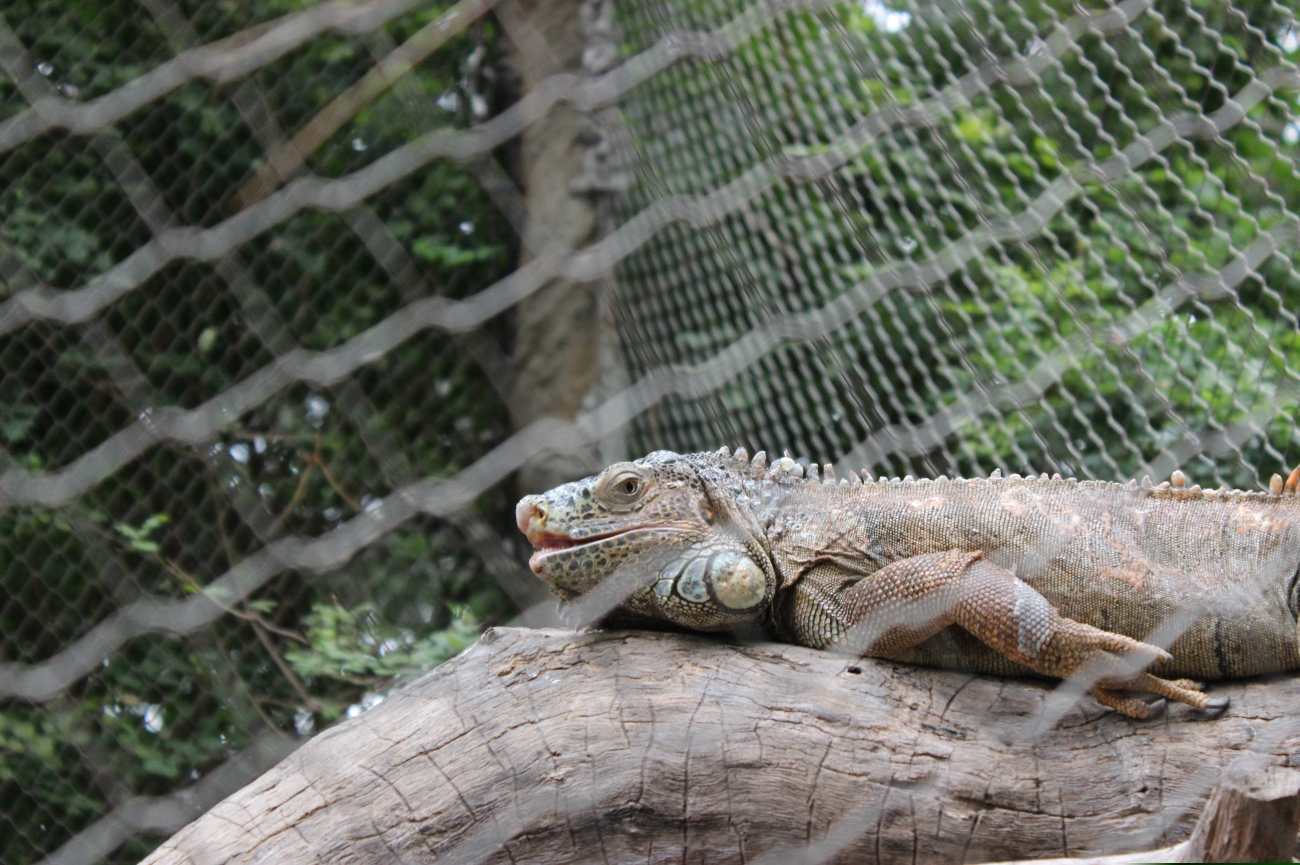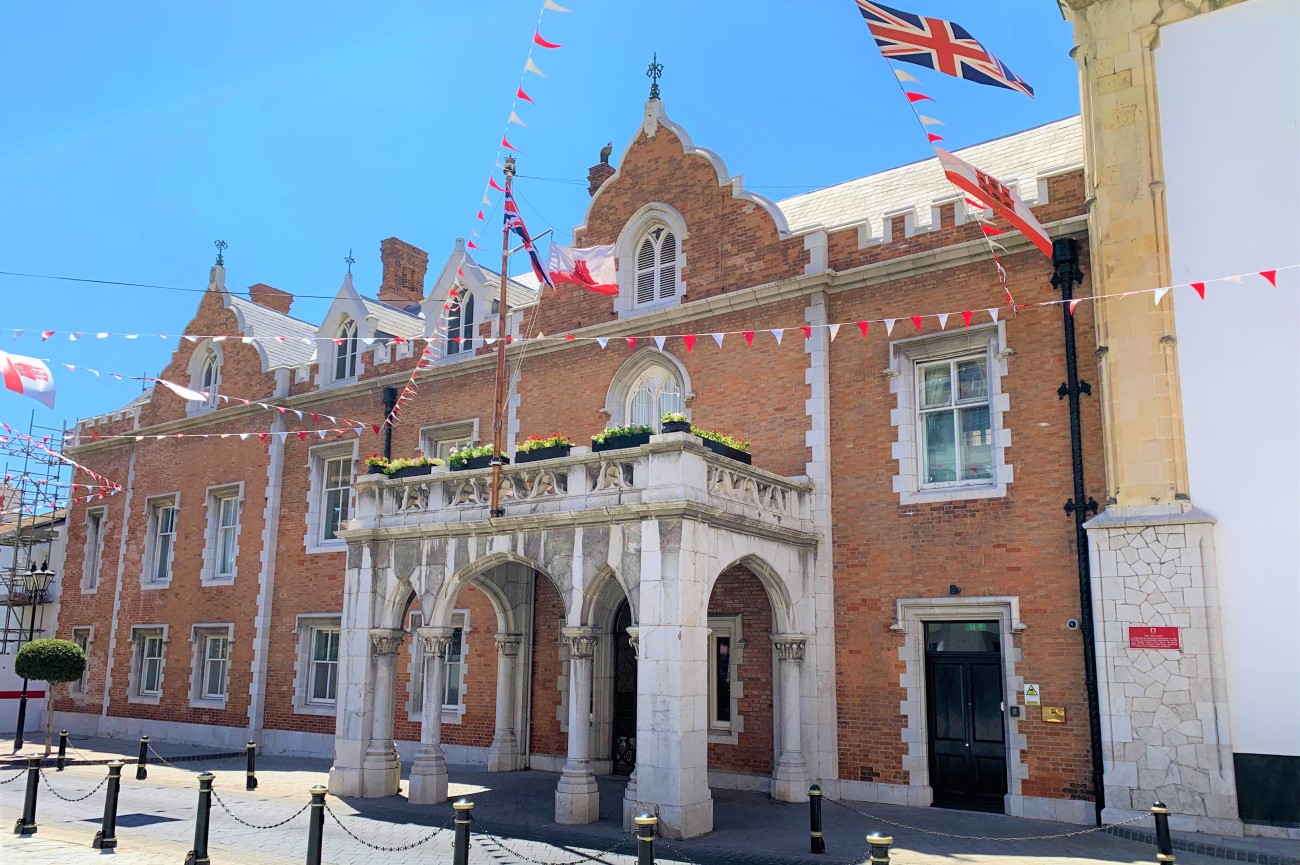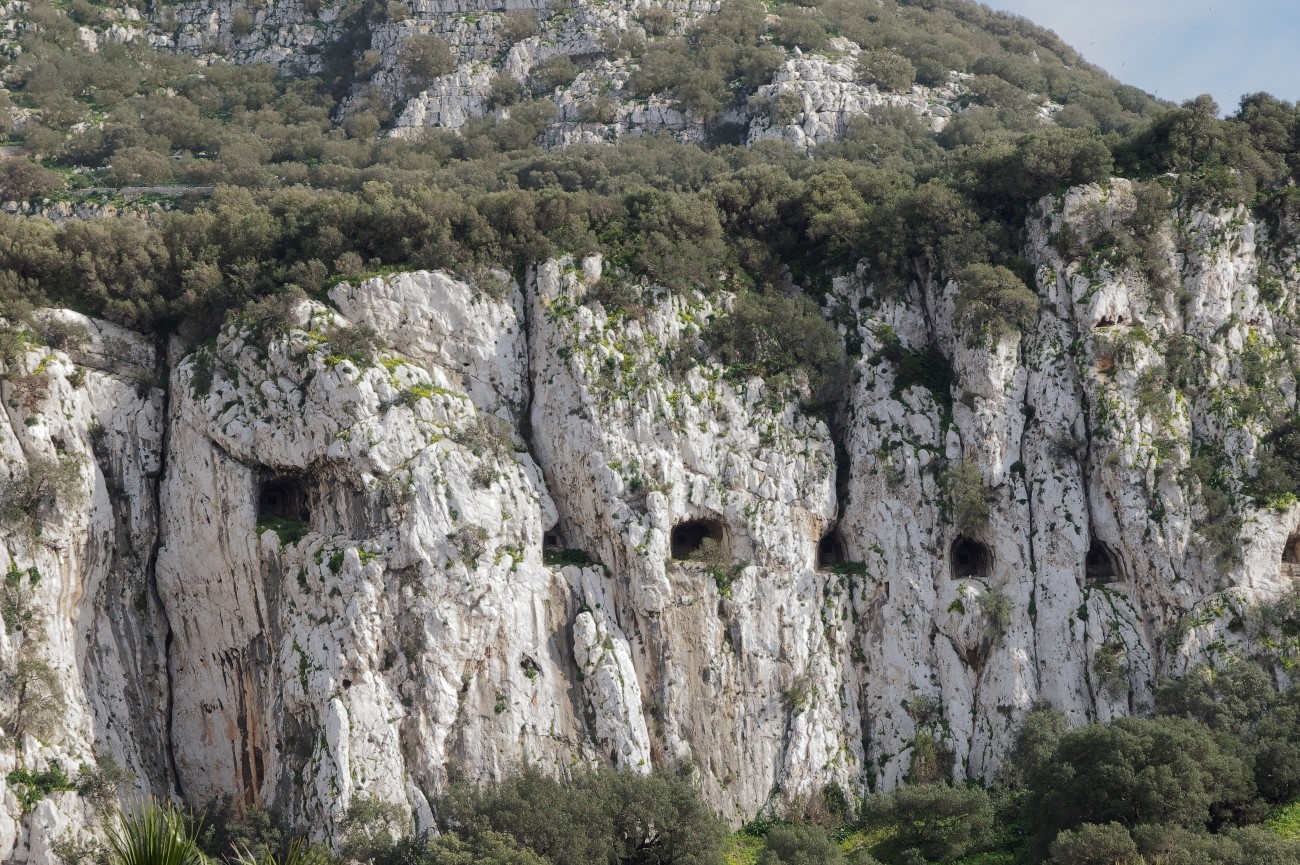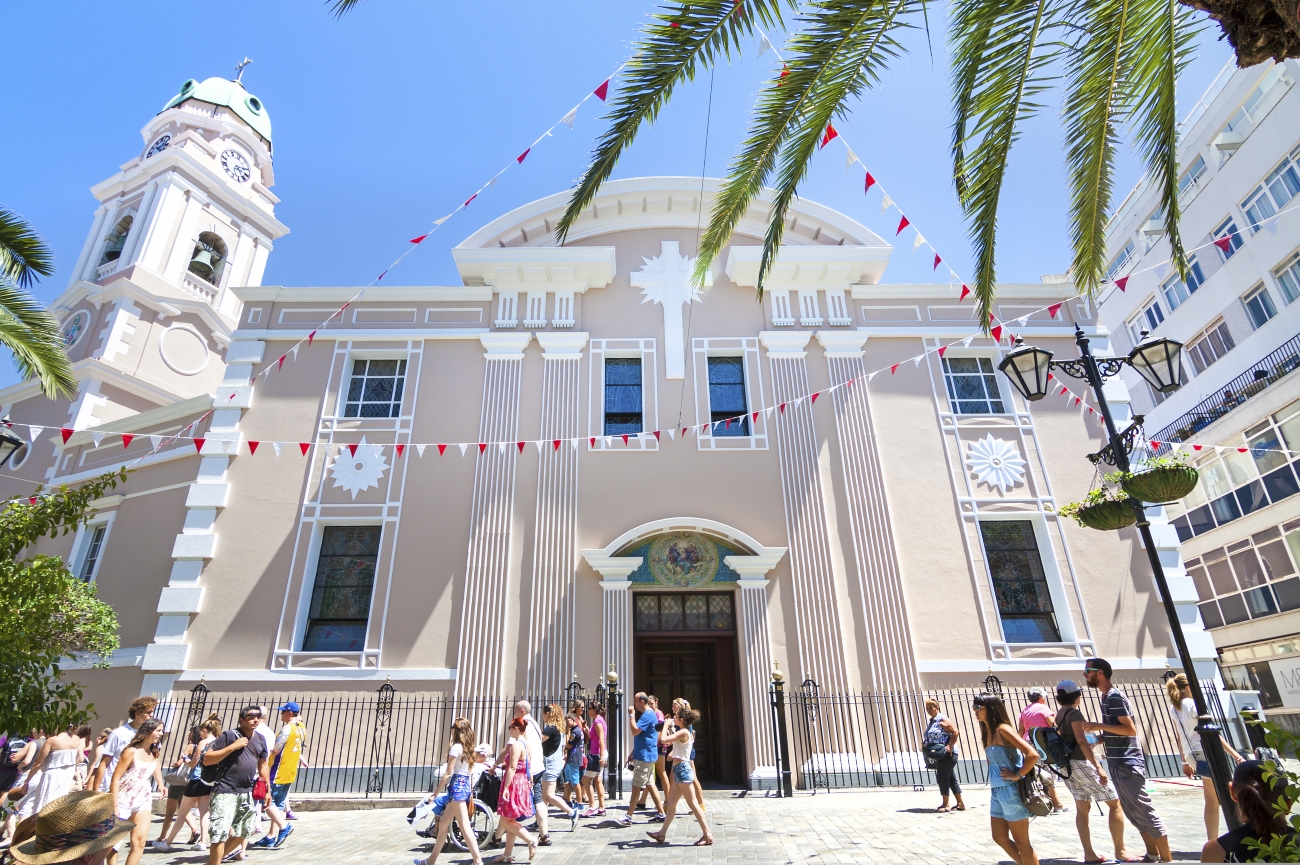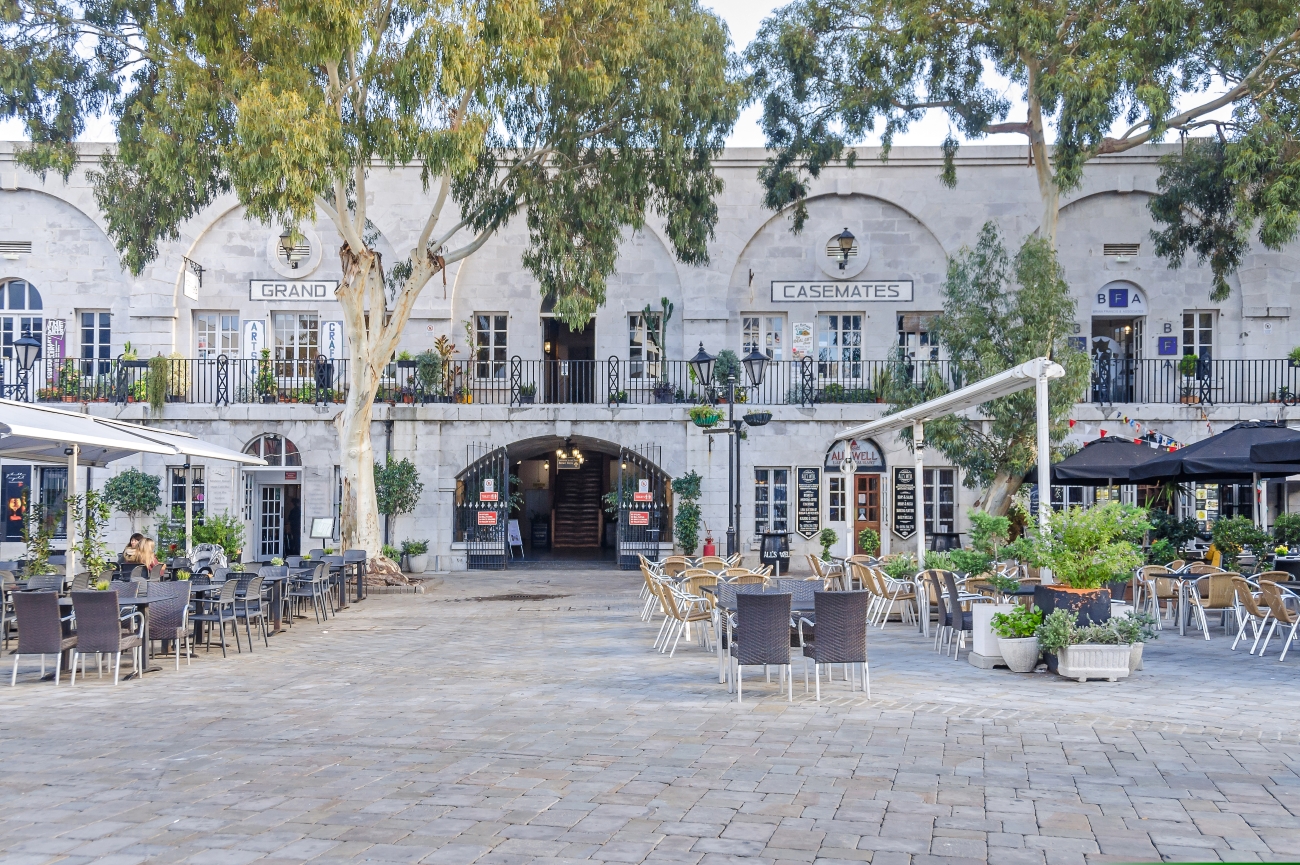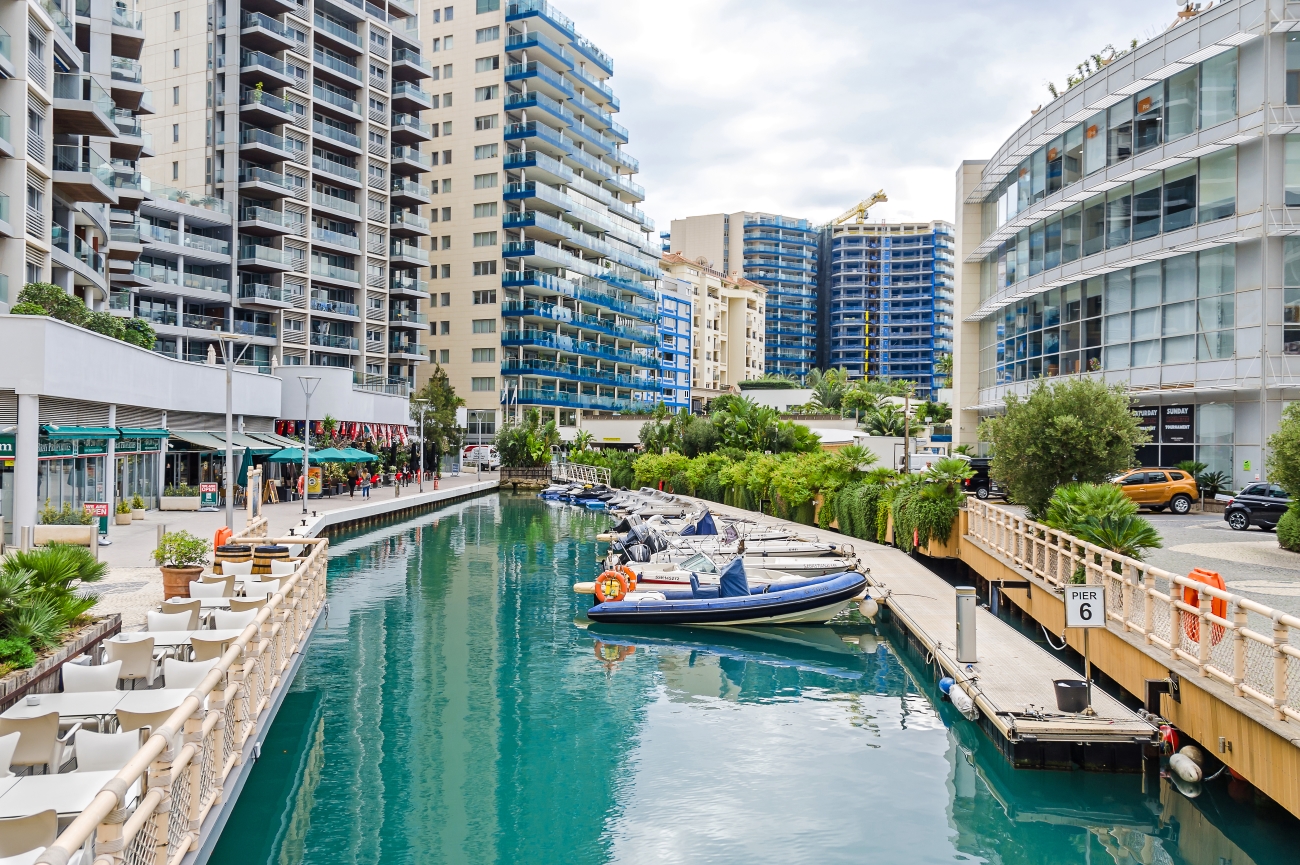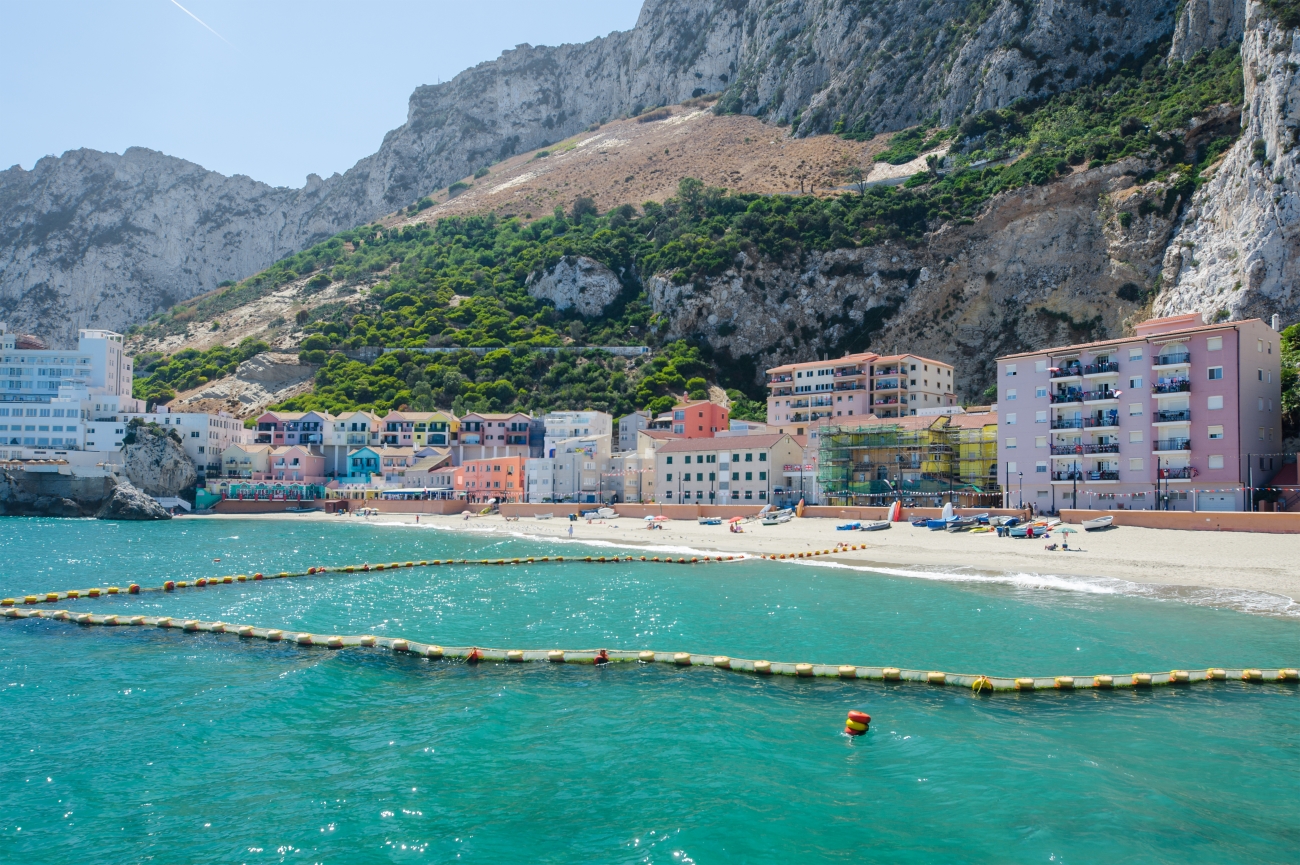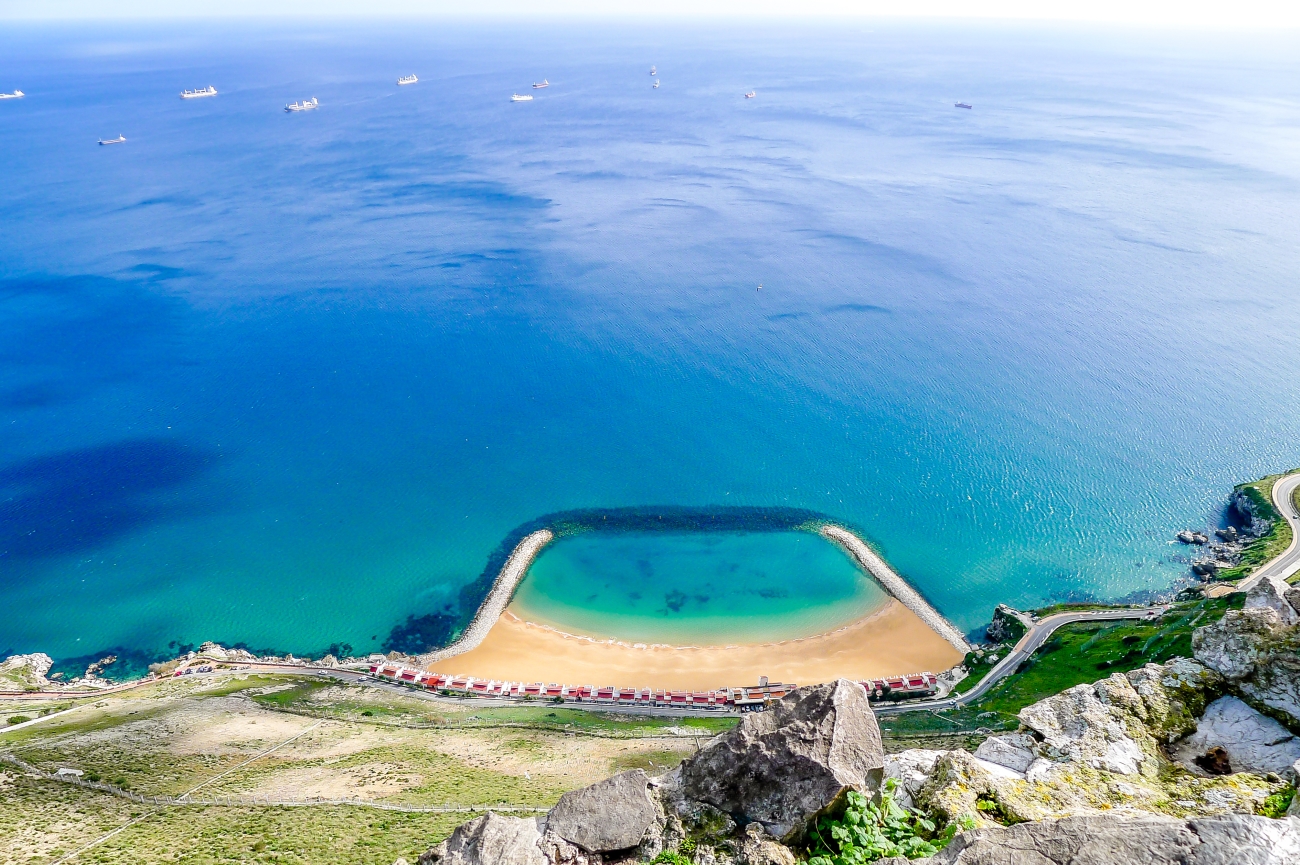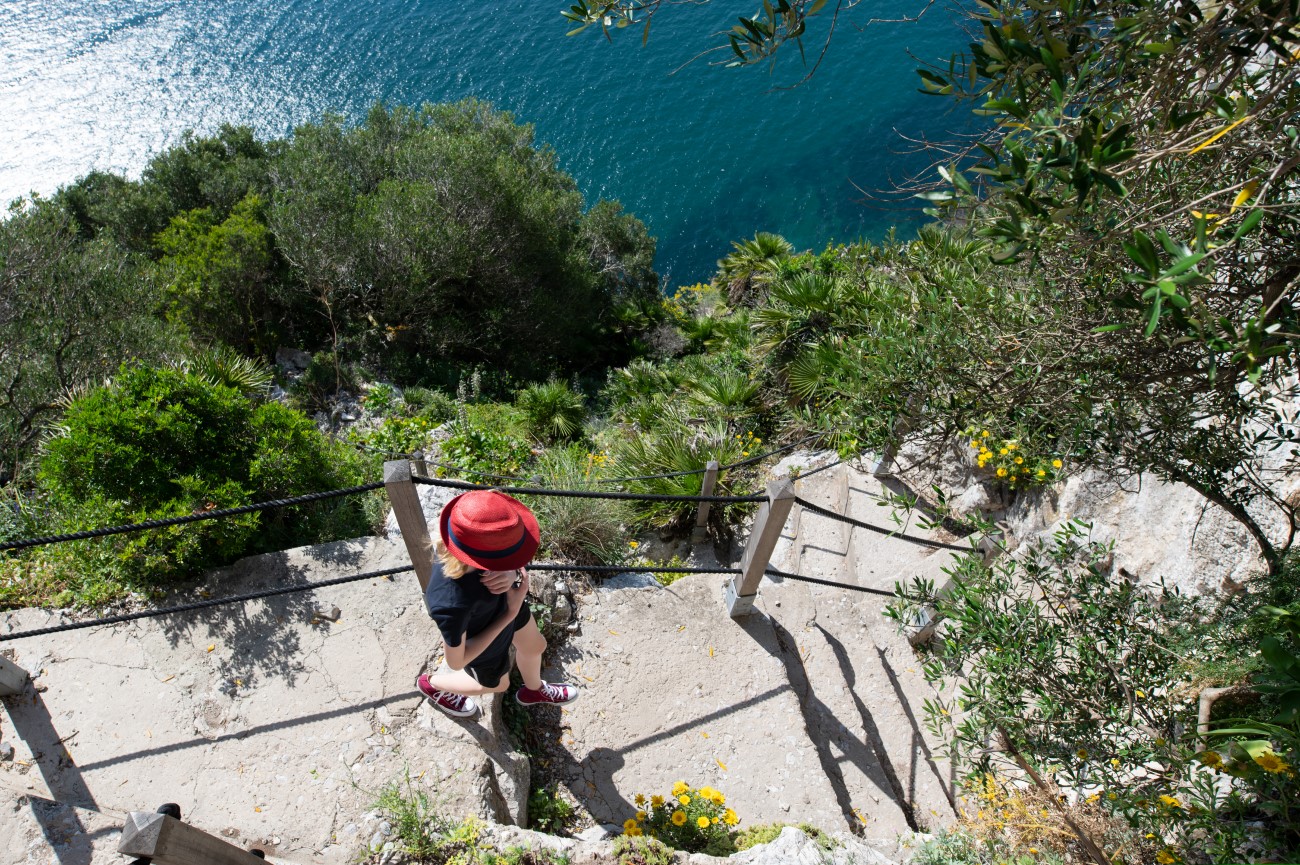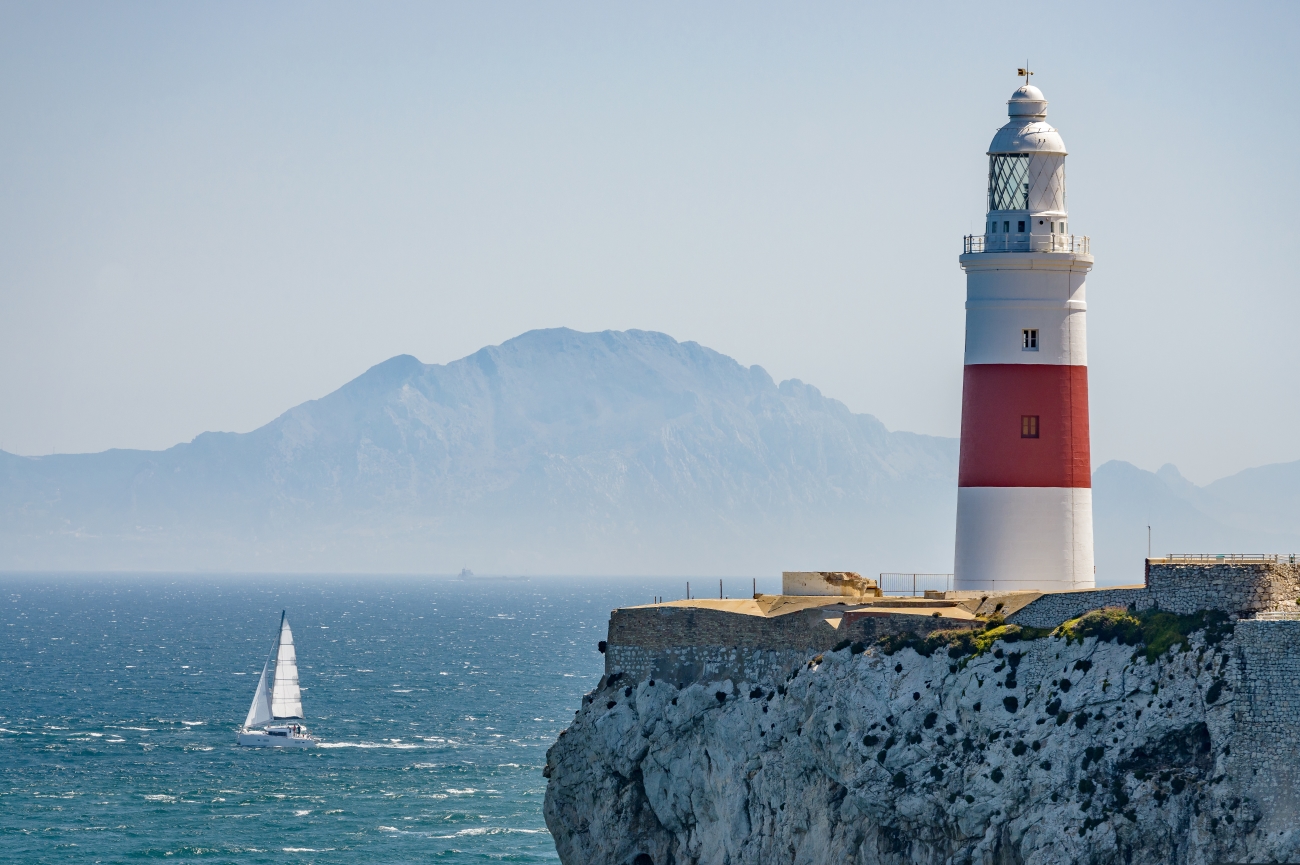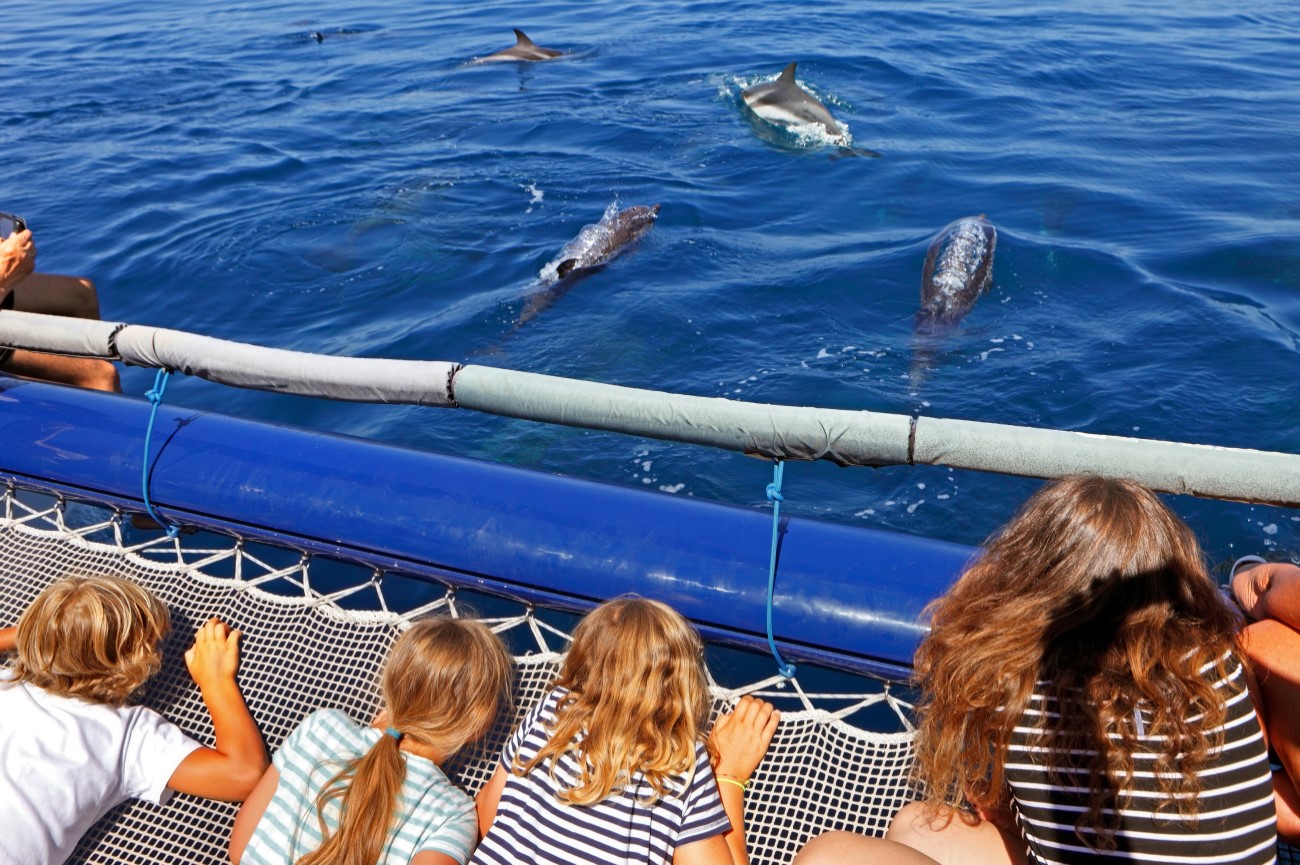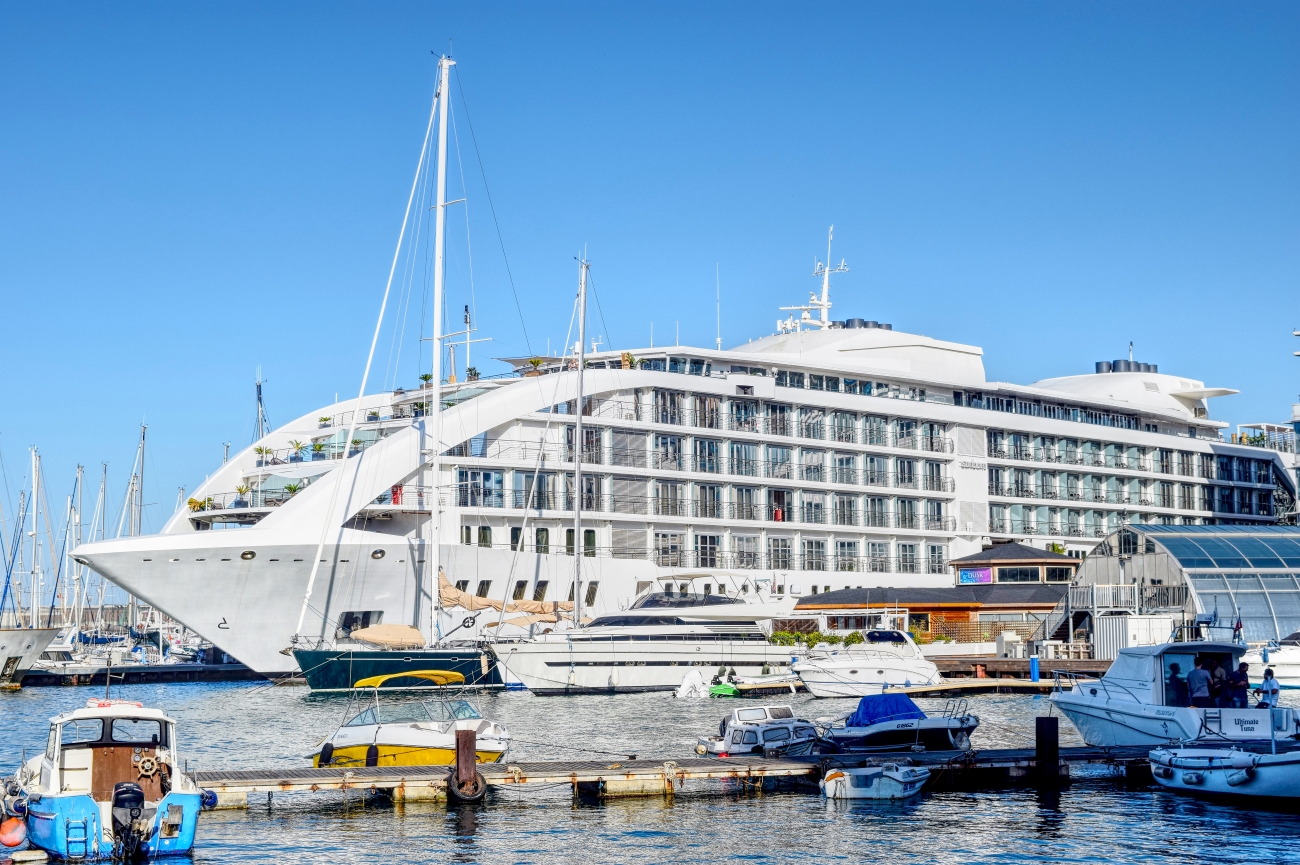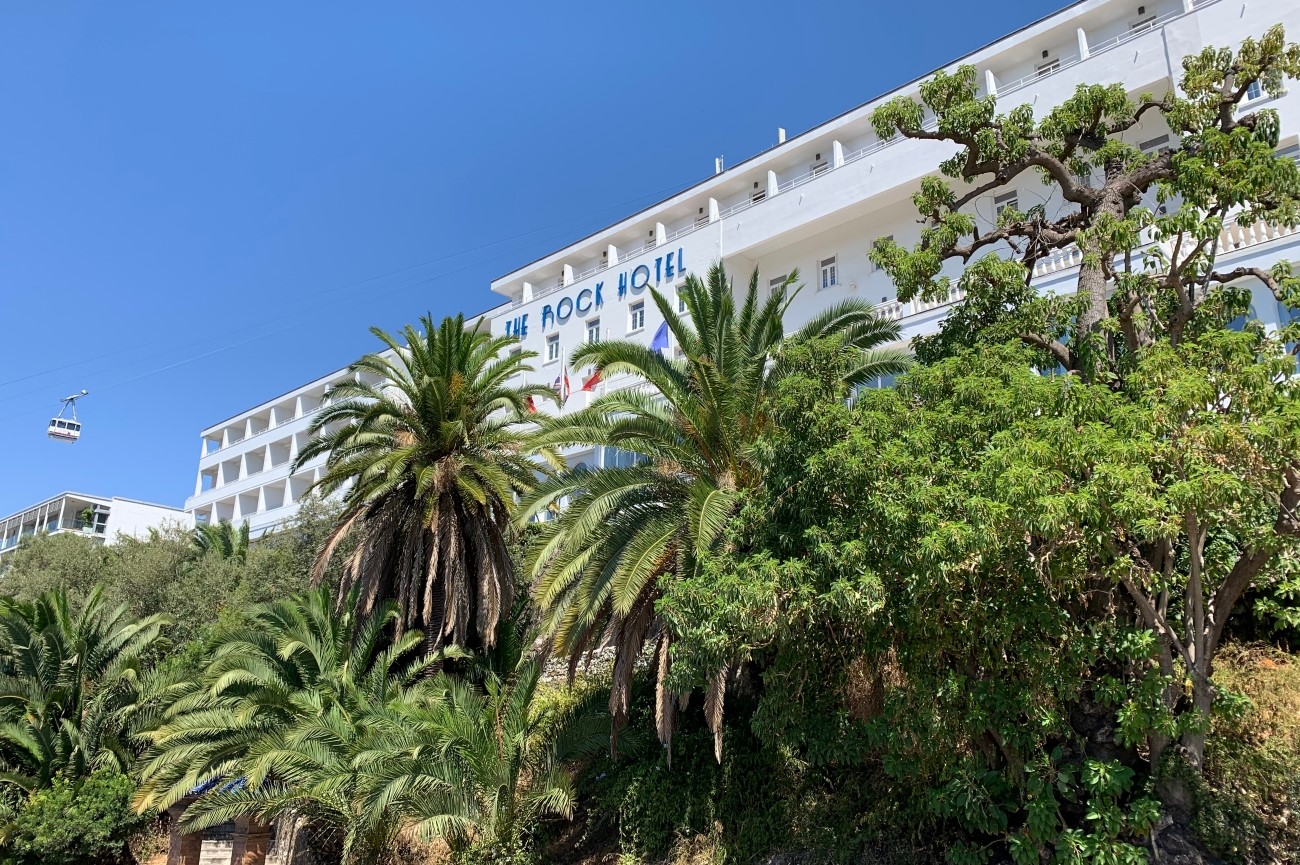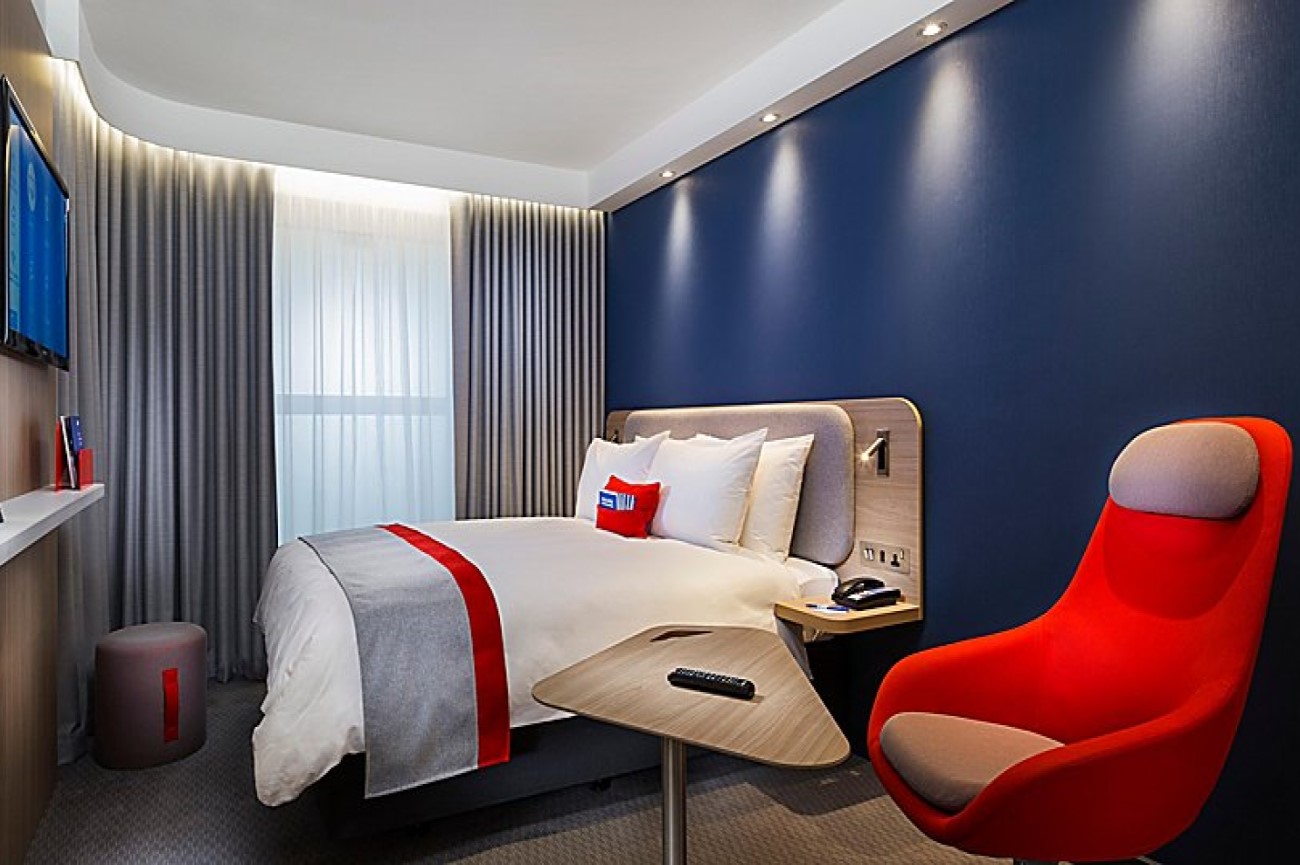Things to do in Gibraltar
With pubs, fish and chip shops and afternoon tea on offer, entering Gibraltar is like stepping foot in Britain. Yes, this is a British territory, but the warm climate and the occasional swap between English and Spanish give away its location, on the tip of Spain.
Jutting out into the sea, it’s the striking natural landscape that draws most visitors to Gibraltar. It might be a small land, but there’s no shortage of attractions here: from the 426-metre high Rock where Barbary apes roam around, to the underground tunnels and the dolphins swimming by the shore.
Below are the best things to do in Gibraltar, including tips on where to eat and where to stay.
Morning: Gibraltar Nature Reserve, Upper Rock
Start your day in Gibraltar by heading to the cable car base station. Hop aboard, and you’ll reach the top of the Rock in around six minutes. It’s here you’ll find most of the town’s main attractions, including the Gibraltar Nature Reserve, home to the Barbary apes and numerous bird species that migrate from Africa to Europe. The views from up here are also incredible as the Rock overlooks Gibraltar, Spain and Morocco.
Reminders of Gibraltar’s military history are still visible here, like the Moorish castle or the canons within the Siege Tunnels. Still, it’s the Barbary apes that most people come to see. There are around 200 of these wild monkeys, most of them living at the top of the Rock, but you can occasionally spot them in other parts of the territory.
Even though they look cute, they’re still wild, which means they can sometimes bite. The best place to see them up close is at the Apes’ Den. Make sure to keep your possessions away as they tend to snatch them and please don’t feed them.
Note: The first cable car departs at 9:30 a.m., and the last one down is at 5:45 p.m.
Great Siege Tunnels
Tickets for the Nature Reserve, also give you access to the Great Siege Tunnels. These underground passages were dug out during the Great Siege of Gibraltar in just six weeks. As you squeeze inside today, you can’t help but marvel at the handiwork involved. The British created the tunnels as a defence system against French and Spanish, who tried to recapture Gibraltar. The siege lasted from 1778 to 1783, but thanks to the cannons mounted inside these pathways, they were eventually defeated. In total, they stretch for about 51 kilometres, with more tunnels added during WWII.
Gibraltar Skywalk
From the tunnels, slowly make your way to the Gibraltar Skywalk. Completed in 2018, it’s a new attraction, but it’s already among the top things to do on the Rock. Set 340 metres high, it offers dramatic views over the Strait of Gibraltar. If you’re feeling brave, you can walk over the Windsor Suspension Bridge, a wooden walkway that hovers high above a 50-metre gorge. On windy days, it can sway a bit, so it's not ideal for those afraid of heights. The bridge is part of the Thrill Seekers Trail, which takes visitors through some of the steepest paths around the Rock.
St. Michael’s Cave
Close to the Skywalk is the St. Michael’s Cave, the largest one in
Gibraltar featuring an impressive set of tunnels and chambers dropping
as low as 62 metres deep. It has been occupied since prehistory, as some
cave paintings have proved. Later it was used as a defensive structure
by the Moors and the Spaniards. Inside the caves, you’ll find a
breathtaking collection of stalactites and stalagmites. The Cathedral
Cave also includes an auditorium which occasionally hosts music and
dance performances. There are many legends associated with the St.
Michael’s Cave, with some people saying it connects Gibraltar to Africa
through a secret underground passage.
Nearby, you can visit the Moorish castle.
O'Hara's Battery
Next, head up to the O'Hara’s Battery. At 421 metres, it’s the highest point on the Rock offering incredible views over the town and the sea. It was built as a military fortification, and some of the artillery pieces are still on display today. There are similar structures nearby like the Lord Airey’s Battery and the Spur Battery, but nothing beats the views from O’Hara’s.
Gibraltar Tour Map (Morning)
Afternoon: Gibraltar Botanic Gardens
From the Rock, take the cable car back down and spend the afternoon
exploring the town centre. Start with a visit to the Gibraltar Botanic
Gardens, aka the Alameda. This green oasis was designed as a quiet
respite for British soldiers stationed here in the 19th century. It’s a
bit busier these days, especially on weekends, but during the week it’s
still possible to come here and escape the crowds.
Amid the bougainvillaea and drago trees is the Alameda Wildlife Conservation Park, a small zoo housing rescued animals. There’s also an open-air theatre that hosts several cultural events.
Convent
A few steps away on the Main Street is the Convent, one of the oldest buildings in town. Dating back to 1531, it used to be a residence for Franciscan priests. In 1728 it became the office for the Governor of Gibraltar, but the building kept its name. You can’t go inside, but it’s still worth passing through to admire its brick-tile facade.
Holy Trinity Cathedral
Another building that deserves a capture is the Trinity Cathedral. While it dates from 1832, this small church is famous for its Moorish revival architecture, with striped horseshoe arches around its front.
Gibraltar Museum
To understand the region’s cultural and historical background, you should visit the Gibraltar Museum. Here you can discover more about the people who have occupied the area since the Carthaginian era to the present day and the events that have shaped its history like the Great Siege. Beyond these exhibits, visitors can also see well-preserved Moorish baths in the basement. The building was the residence of the Principal Artillery Officer, and it was only in 1930 that it got converted into a museum.
Cathedral St. Mary The Crowned
St. Mary the Crowned is the second cathedral you’ll find in Gibraltar. When the town was under Moorish rule, this was the site of their mosque. It was only in 1462 that it got converted into a church by the Spanish monarchs. Since then, it’s gone through several changes, with a bell tower added in 1820.
Irish Town
Running adjacent to the Main Street is the Irish Town. Despite the name, this isn’t a neighbourhood as such, but one single street. It gets its name from the Irish women who arrived here in the late 18th century to provide company to the British. Its proximity to the port made it a thriving commercial area, but most of those buildings got destroyed during the Great Siege. After an extensive renovation in the 19th century, the Irish Town reemerged once again and has since become one of the most lively streets in Gibraltar, with bars and shops lining each side.
Old Town
Follow the Irish Town to the end, and you’ll end up in the heart of the old town. Here traditional British pubs and red telephone booths blend in with the Moorish and Spanish architecture. At the centre of it all is the Casemates Square, with charming terraces offering views of the Rock above. The old town is only 15 minutes away from the airport, so if you’re flying to Gibraltar, it 'll probably be the first thing you’ll see.
Ocean Village
End your tour of Gibraltar with a stroll around the Ocean Village. This modern neighbourhood is located around the marina, which bears the same name. For newcomers, it feels like a mini-Marbella, with private vessels and trendy waterfront bars and restaurants. There’s even a luxurious hotel housed inside a yacht. The marina gets pretty lively in the evenings with locals occupying the bars or the hotel’s casino.
Gibraltar Tour Map (Afternoon)
Other Attractions In Gibraltar
- Beaches: Gibraltar is home to six small beaches, which are often overlooked by tourists. To the east of the Rock are the sandy beaches, while on the west, you’ll find more pebbles. The Eastern Beach is the largest and also provides a variety of watersports. The only downside is that it’s very close to the airport runway, so you’ll often see planes flying over the beach. Other beaches include the Catalan Bay, Camp Bay, Little Bay, Sandy Bay and the Western beach.
- Mediterranean Steps: Another way to access the Rock, besides the cable car, is to hike up the Mediterranean Steps. These were initially used by the British to reach their military bases. Today it’s a way for locals to get fit. The path begins at the Jews’ Gate on the southern end of the island and continues through a winding staircase, not ideal for people with vertigo. At the end of the route is a viewing platform overlooking the Strait of Gibraltar. You will need about two hours to go up and down this route.
- Europa Point: This is the most southerly point in Gibraltar, offering splendid views of the North African coast, just 21 kilometres ahead. On a clear day, you can even spot the Rif mountain range in Morocco. It’s a demanding hike to the top, so if you don’t have a car, it’s best to hop on a bus from the town centre, which takes about 10 minutes. Up here, you’ll find a 19th-century lighthouse, a small chapel and a striking mosque built in the 90s. Other noteworthy attractions nearby include an ancient water reservoir called Nun’s Well, and a stadium.
Top Things To Do With Kids In Gibraltar
Gibraltar is an ideal spot for a family holiday. Its small size makes it easy to explore on foot in one or two days.
Kids
will enjoy the cable car ride up to the Rock, where they can see the
Barbary apes up close. In the same area, they can explore tunnels and
fortifications like the Moorish castle or admire the views from one of
the many lookout points. While in the town area there are museums and the botanical gardens.
The waters around Gibraltar are also home to several marine species, including dolphins and whales. From the marina, you can hop on a cruise and have fun spotting these animals as the sun sets over the bay. If you’re lucky, you might catch one jumping next to you. Tours are provided by companies like Dolphin Safari and Dolphin Adventure.
Other entertainment facilities include The Kings Bastion Leisure Centre, a large indoor complex which features an ice skating rink, bowling, arcade games and a cinema.
Once you’ve seen the main sights, you can spend the rest of your holiday relaxing on the beach or under a terrace. With extra time, you can rent a car and explore other cities in the south of Spain.
Where To Eat In Gibraltar
- Charlie's Steak House And Grill: Diners can enjoy a meal with a view
at this local restaurant opposite the harbour. As the name suggests, it
focuses on steaks and grilled dishes. Beyond the high-quality meat cuts,
there’s a section with Indian cuisine, featuring some of the best
curries in town. Families can also order from the kids’ menu, which
includes burgers and pasta.
- Rendezvous Chargrill: You’ll find this
restaurant at the Queensway Bay, close to the cable car base station.
Most dishes here come from a charcoal oven, including fresh fish and
steaks. There’s also a section with vegetarian dishes. To pair with the
meal, they offer a variety of wines, which you can order by the glass or
the bottle.
- The Landings: Also in the Queensway area is this lively
restaurant and bar. The menu focuses mainly on seafood and fresh fish,
but there are also meat and vegetarian options. Beyond the food, it’s
worth coming here for the harbour views and the sunset.
- Gauchos
Steakhouse: Gauchos offers mouth-watering Argentinian steaks cooked in a
black rock grill, similar to the parrillas barbecue used in
Argentina. Each section of the menu also comes with a wine suggestion
that compliments the meal.
- The Lounge Bar & Gastro Bar: At the Lounge Bar you can order breakfast until noon or enjoy tapas and drinks all-day-long. Attached to it is the gastro bar, which serves lunch, dinner and even afternoon tea. The desserts are also worth trying, especially the cheesecakes.
Best Gibraltar Hotels
- Sunborn Gibraltar Hotel (5 stars): The most luxurious and unusual hotel in Gibraltar is the Sunborn Hotel in the Ocean Village. Housed inside a yacht, most rooms here come with views of the harbour. It features two restaurants and two bars, with one on the deck around the outdoor pool. Other facilities include a casino and a spa with a fitness centre and a sauna.
- Rock Hotel (4 stars): Close to the Gibraltar Botanic Gardens is the Rock Hotel. Its privileged location on the foothill of the Rock, allows you to enjoy views over the sea and the Strait of Gibraltar. Many renowned guests have passed through here, including Sir Winston Churchill. The hotel includes one of the largest pools in Gibraltar, as well as several dining facilities which serve a mix of British, Spanish and Moroccan cuisine.
- Holiday Inn Express Gibraltar (3 stars): The Holiday Inn Express is located close to the airport, and only 10-minutes away from the Eastern beach. If you’re looking for a budget hotel, this is a good alternative. The rooms are modern and comfortable, and some offer views of the Rock of Gibraltar. Breakfast is included on the stay, and there’s an Italian restaurant available for other meals.
Best Time To Visit Gibraltar
The best time to visit Gibraltar is around spring or autumn. At this time the temperatures are warm but comfortable enough to walk around the city and explore the Rock. There are also fewer crowds around this time. By July, the temperatures start getting higher and usually stay that way until September. These months are the perfect time to head to the beach or practice watersports like paddling or diving.
Gibraltar Festivals
- Three Kings Cavalcade: This is one of the most lively events in Gibraltar. It takes place on the 5th of January, marking the end of the holiday season. Marching bands, giant floats and carol singing take over the streets, and some people toss sweets to the audience. The parade usually departs from the Casemates Square around 7:30 p.m. and then moves along the Main Street.
- Gibraltar Spring Festival: The Spring Festival celebrates the arrival of summer in Gibraltar. It occurs between May and June and lasts for about three weeks. During this time, the town welcomes a series of events including dance shows, theatre performances, art exhibits and a food festival.
- May Day Celebrations: Every year, Gibraltar hosts a variety of celebrations to commemorate the 1st of May. These include live music performances and a union rally usually held at the Casemates Square.
- National Day: One of the most famous events in Gibraltar is the National Day on the 10th of September. The event celebrates a referendum held in 1967 when voters chose to keep Gibraltar as a British territory. On this day, locals dress in red and white and gather around Casemates Square, where street parties and concerts take place. There’s also a food fair near John Mackintosh Square serving a variety of local dishes. The highlight of the event, however, is the release of the balloons and the fireworks display over the bay.



